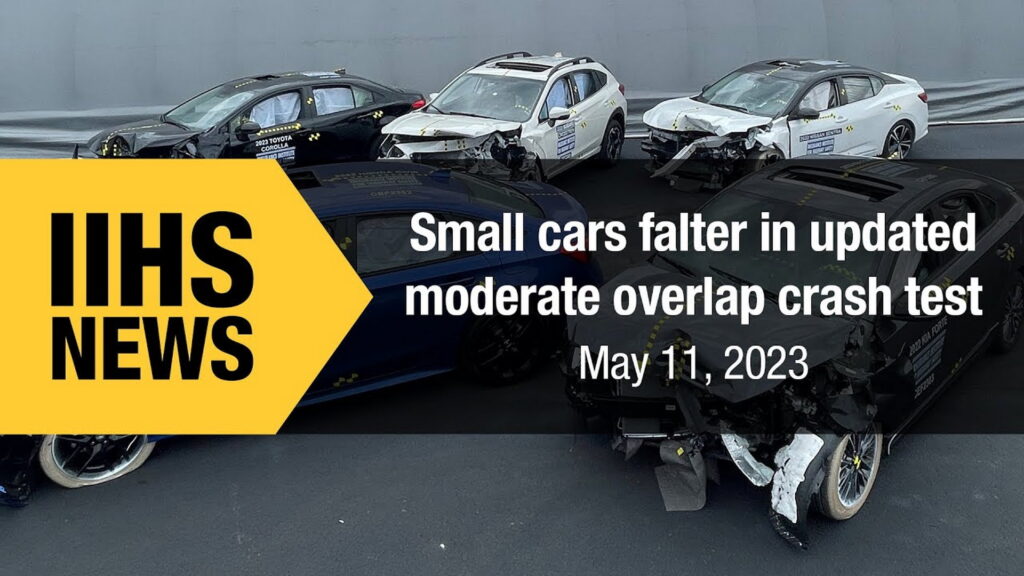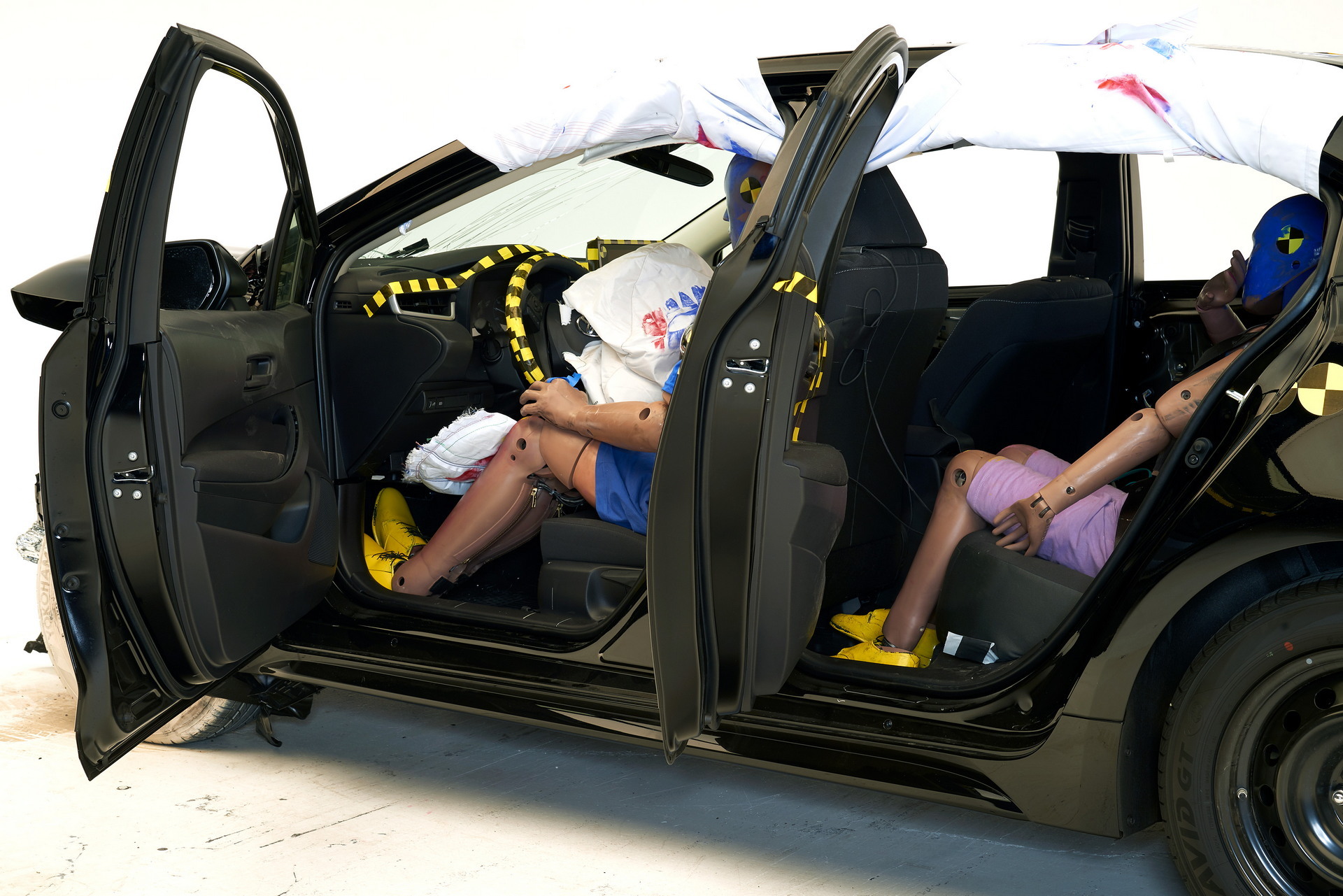Five small passenger cars just failed to achieve a “Good” rating with the IIHS after crash testing. An updated moderate overlap test shows that rear-seat occupants face a greater risk of danger in these types of crashes. Here’s what the IIHS found, which vehicles did the best and worst, and what automakers need to do to solve the problem.
Last year, data indicated that rear-seat passengers might face a greater risk of death or serious injury than those in the front seat. The IIHS says that this is because front-seat occupants are safer than ever. Now, it’s aimed at improving rear-seat safety through an updated moderate overlap crash test. Part of that update is adding an adult-sized dummy into the rear seat to see how it fares.
The Honda Civic sedan and Toyota Corolla sedan each had matching scores across all tests. That included “Good” ratings for almost all categories. The one area where each faltered, and to be fair, all five did, was rear passenger restraints and kinematics.
Read: SUVs Don’t Just Hit Cyclists, They Run Them Over, Too
Both saw their rear passenger experience what the IIHS calls submarining. That’s when the lap belt moves up onto the abdomen which itself, increases the risk of internal injuries. Again, every one of these cars had that problem. The rest of the field had other significant issues though.
The Kia Forte ended up with an overall rating of “Poor” thanks to a “Poor” score for rear passenger head and neck restraints and a “Moderate” score for chest injury measurements. The Nissan Sentra had the same issues but also saw head and neck concerns for the front passenger. The Subaru Crosstrek had marginal performance in terms of rear seat head and neck safety and poor performance regarding chest injuries.
The IIHS believes that automakers will take this data and ultimately improve rear-seat occupant safety. It could start that process with the inclusion of better seat belt parts including crash tensioners and force limiters. When that happens is anyone’s guess though.




























